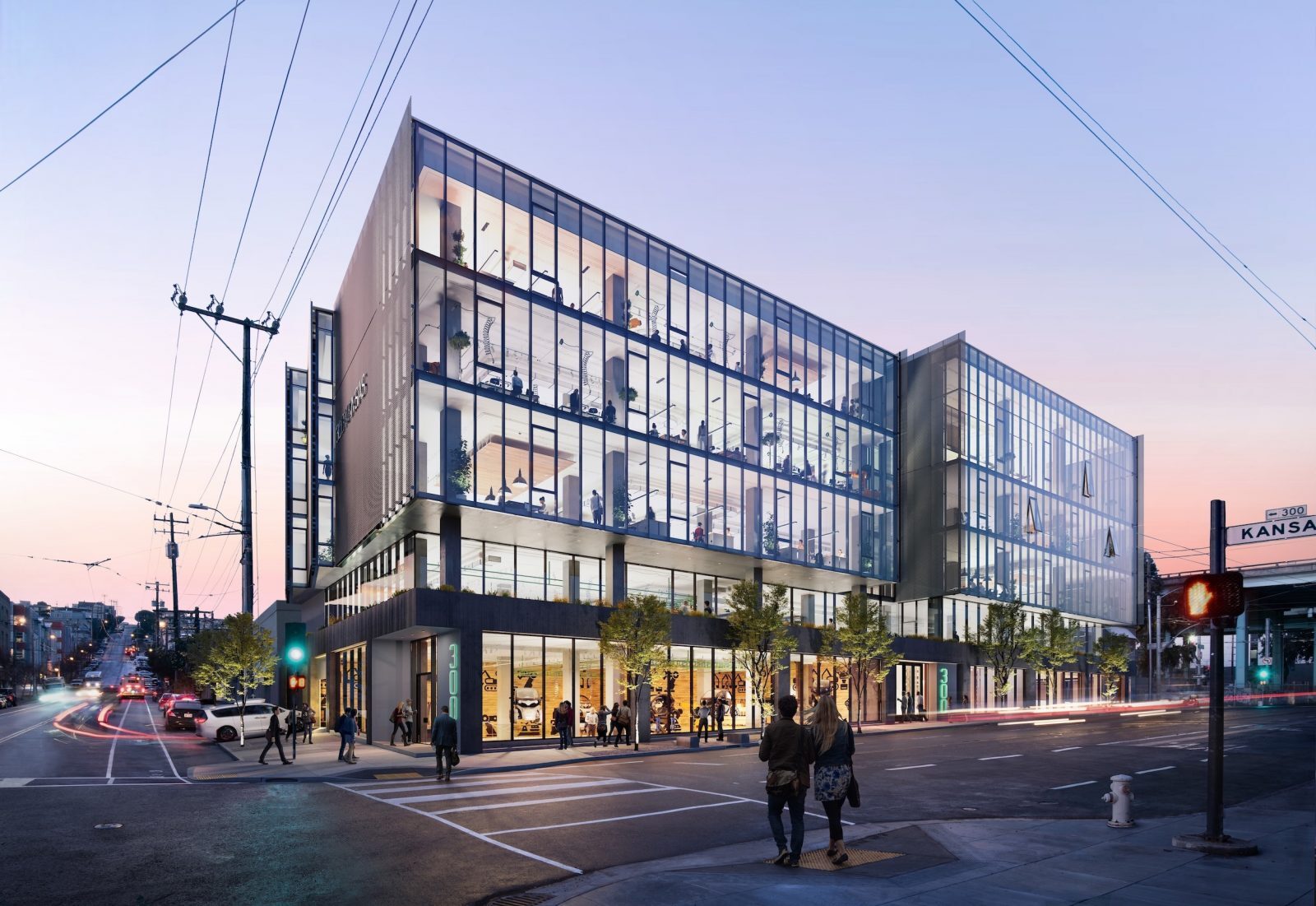What Spear Street Capital is betting on in San Francisco is still a hulking skeleton of concrete and metal at the foot of Potrero Hill.
But the developer is billing the six-story, 150,000-square-foot structure at 300 Kansas St. as the city’s first “ground-up advanced manufacturing project” in a long time.
The project represents a counter-cyclical play that its developer believes could help kick-start a new wave of manufacturing and lab space as the broader office market struggles.
“First off is what we’re standing on, meaning the load capacity of the floors,” said Ethan McCall, vice president of Spear Street Capital, on a construction site tour. “For these purposes, there’s a lot of engineering lab, heavy machinery and equipment. Maybe even cars.”
McCall drew a few distinctions between the project at 300 Kansas and the city’s increasingly vacant office stock—the subject of growing consternation for the real estate industry and public officials.
The building’s design, which provides three entry points for vehicle loading onto the ground, first and second floors, would be ideal for companies in biotech, robotics or autonomous vehicles according to McCall.
Spear Street’s investment runs counter to the pre-pandemic real estate boom. Back then, as tech companies exploded in size, they snapped up buildings for top dollar that were originally meant for life sciences.
In fact, the market was so saturated by companies looking to turn warehouse and manufacturing space into industrial-chic tech offices that the SF Planning Department started an initiative to penalize scofflaws who did so in violation of the zoning code.
But that was then. Now, as local office workers stay home at higher rates than in other cities, laboratory and light industrial spaces have continued to reliably attract in-person workers.
As McCall put it, “It’s hard to re-create a wet lab in your living room.”
The 300 Kansas project is slated to be finished in August, with tenants potentially moving in near the beginning of 2024.
A stone’s throw from the Mission Bay ecosystem that developed around UCSF, Potrero Hill and the Design District are two centers of what McCall believes could be a new hub of research and development.
Jason James, an industrial and office broker with TRI Commercial who’s worked in the area for more than 20 years, said most of the new light manufacturing space available is repurposed from old building stock. But there’s plenty of it ready to be leased.
“If you were to stand on the roof of this new development you could almost throw a rock and hit a handful of competing big block properties,” James said. “Everybody and their mother is going after lab because that’s the highest and best use in the (Production, Distribution and Repair) zone”
Still, he added that ground-up properties have the advantage of being new and meeting market demand for move-in ready properties, rather than bureaucracy-laden buildouts.
Betting Against Pessimism
The developer is building “on spec”—or without tenants in hand. That could be a risky prospect amid larger uncertainty in the office market.
But McCall argued that the strategy works with the typical timeline of startups, characterized by rapid growth and just as rapid contraction.
“It’s much easier to get people interested in a building like this when they can actually stand in it,” McCall said. “As I sit here today I’m like, ‘I’m pretty happy we’re not building a typical office building.’”
San Francisco has a little more than 1 million square feet of lab and research and development inventory, according to data from real-estate services company CBRE. That pales in comparison to the Peninsula (17 million square feet), Silicon Valley (6.4 million square feet) or even Oakland (7.8 million square feet).
The vacancy rate for lab and R&D space in San Francisco is 13.2%, less than half that of the broader market. Silicon Valley’s greater proportion of lab space is part of the reason why its market has seemingly weathered the pandemic better than San Francisco.
Spear Street’s pitch is to combine the facilities necessary for intensive lab or manufacturing with the kinds of amenities a blue-chip tech tenant now expects. So alongside high ceilings and an upgraded power supply required to operate advanced lab equipment is a roof deck that offers direct views of the city’s skyline and the East Bay.
Sustainability is also part of the pitch. Spear Street is paying a premium to PG&E to ensure that its electricity is coming from renewable sources, and is working with the nonprofit International Living Future Institute to purchase and verify carbon offsets for the building’s construction.
Spear Street purchased the site for $21.5 million in September 2019 and took the building through the entitlement process during the peak of the pandemic before breaking ground in October 2021.
The most recent new R&D space to come to the market is just a few blocks away at 101 Utah St., where developer Swift Real Estate Partners renovated a 1940s-era warehouse to meet the needs of modern occupants. Other nearby projects include 1 De Haro occupied by sensor maker Samsara and 198 Utah St, which is currently under renovation.
“For the last 10 or 15 years when the market has been accelerating at such a quick pace, it’s really hard for a group like us to participate,” McCall said. “Now that pessimism is at an all-time high, we’re starting to spend more time here.”
